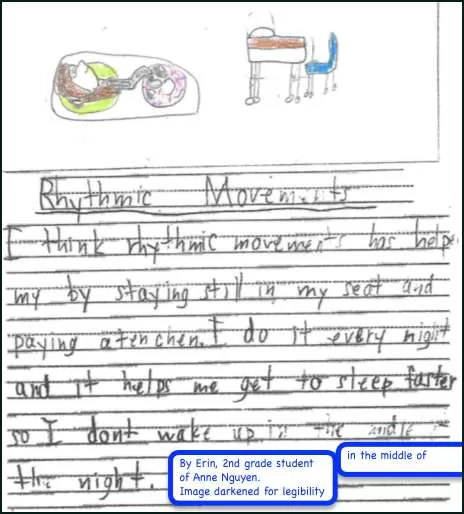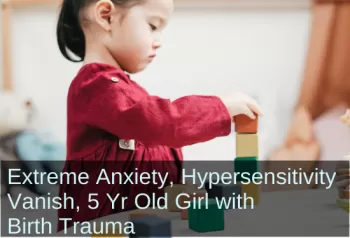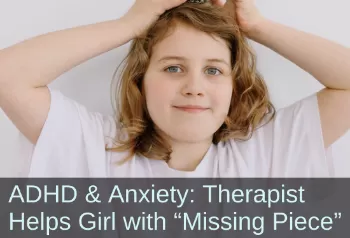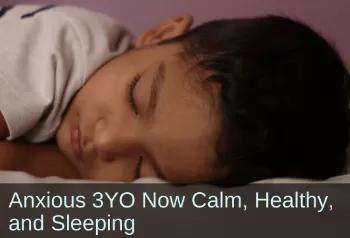Sleep Issues
Help for Sleep Issues with Innate Rhythmic Movements
by Sonia Story, M.S.
Many children, teens, and adults are struggling with an inability to fall asleep or to stay asleep.
When we are lacking in sleep we can experience poor focus, irritability, and hypersensitivities. When prolonged, lack of sleep can lead to illness and accidents.
Sleep is fundamental to our quality of life. How can neurodevelopmental movements—innate rhythmic movements and primitive reflex movements—improve sleep for individuals of all ages?
The brain and body recognize innate rhythmic movements from the earliest stages of life. All healthy babies automatically engage in these special rhythmic movements as part of normal development. These innate rhythmic movements develop the brain and the sensory processing systems. They are also calming and regulating which promotes sleep.
 A few minutes of soothing innate rhythmic movements before bed can make all the difference to turnaround sleep challenges. Parents often report that their children get to sleep easier and sleep longer when they do the innate rhythmic movements.The drawing to the left describes a second grade child's experience. The innate rhythmic movements helped her not only get to sleep faster, with fewer nighttime wake-ups, but also helped her with sitting still and paying attention at school. Adults who are doing the rhythmic movements are also pleased with the excellent improvements in their sleep.
A few minutes of soothing innate rhythmic movements before bed can make all the difference to turnaround sleep challenges. Parents often report that their children get to sleep easier and sleep longer when they do the innate rhythmic movements.The drawing to the left describes a second grade child's experience. The innate rhythmic movements helped her not only get to sleep faster, with fewer nighttime wake-ups, but also helped her with sitting still and paying attention at school. Adults who are doing the rhythmic movements are also pleased with the excellent improvements in their sleep.
For example, Kimberly M. reported that her 80-year-old friend slept much better after using innate rhythmic movements [From the Brain and Sensory Foundations program] to help him sleep. After only a week of doing the rhythmic movements: “For the first time in 20 years, he was able to sleep for a stretch 5 to 6 hours, sometimes longer, for several nights in a row.”
SM is the mother of an 8-year-old. This young girl had a serious illness that impacted her ability to sleep. After doing these relaxing rhythmic movements with her daughter, SM shared the good news: “The first time I did rhythmic movements with my daughter, it was amazing. She slept through that first night without waking up. After months of not sleeping well and not sleeping through the night, she was able to get her first night of solid sleep.”
Sleep challenges can also be a sign of unintegrated primitive reflexes. In this free downloadable chart of the possible long-term effects of unintegrated reflexes, you will see that poor sleep can go hand-in-hand with unintegrated reflexes, especially Moro and Fear Paralysis reflexes. Most likely this is because unintegrated primitive reflexes can result in an unsettled nervous system that is stuck in fight, flight, or freeze states. These more anxious states can interfere with sleep. By using neurodevelopmental movements to integrate the Moro and Fear Paralysis reflexes, we can mature and organize the nervous system, bringing it to a state of calm that supports sleep.
See examples showing how neurodevelopmental movements from the Brain and Sensory Foundations course are associated with transforming sleep challenges.
 Rhythmic movements and primitive reflex integration have made a huge difference for this little girl, who is, " ...now a much happier child and able to engage with her environment without anxiety, tantrums, or over stimulation." Read the full case study.
Rhythmic movements and primitive reflex integration have made a huge difference for this little girl, who is, " ...now a much happier child and able to engage with her environment without anxiety, tantrums, or over stimulation." Read the full case study.
 This young man is experiencing better concentration, less stuttering, and easier sleep after practicing rhythmic movements and primitive reflex integration. Read the full case study.
This young man is experiencing better concentration, less stuttering, and easier sleep after practicing rhythmic movements and primitive reflex integration. Read the full case study.
 This 10 year old with anxiety and ADHD gained calm, confidence, and focus, and is no longer struggling to fall asleep at night. Read the full case study.
This 10 year old with anxiety and ADHD gained calm, confidence, and focus, and is no longer struggling to fall asleep at night. Read the full case study.
 Neurodevelopmental movements resulted in relief for both mom and child when this 3 year old went from excessively clingy to more independent. Read the full case study.
Neurodevelopmental movements resulted in relief for both mom and child when this 3 year old went from excessively clingy to more independent. Read the full case study.
Sonia Story, M.S. has been teaching neurodevelopmental movements since 2006.
Sonia developed the Brain and Sensory Foundations program to provide comprehensive training in neurodevelopmental movements—combining innate rhythmic movements, play, primitive reflexes, and postural reflexes.
She earned a Bachelor's degree in biology/psychology and a Master’s degree in Movement Sciences. She is the author of The Importance of Reflex Integration and the Evidence eBook, giving the rationale and evidence basis for using neurodevelopmental movements for helping with challenges such as ADHD, Sensory Processing Disorders, anxiety, emotional dysregulation, visual skill deficits, poor social skills, gross and fine motor delays and other neurodevelopmental and behavioral disorders.
Her work is featured in numerous podcasts, summits, and conferences, and in the books Almost Autism: Recovering Children from Sensory Processing Disorder; Special Ed Mom Survival Guide; Family Health Revolution; and Same Journey, Different Paths—Stories of Auditory Processing Disorder.
Sonia’s mission is to help children and families experience the profound benefits of neurodevelopmental and integrative movements for more functional and fulfilling lives.


